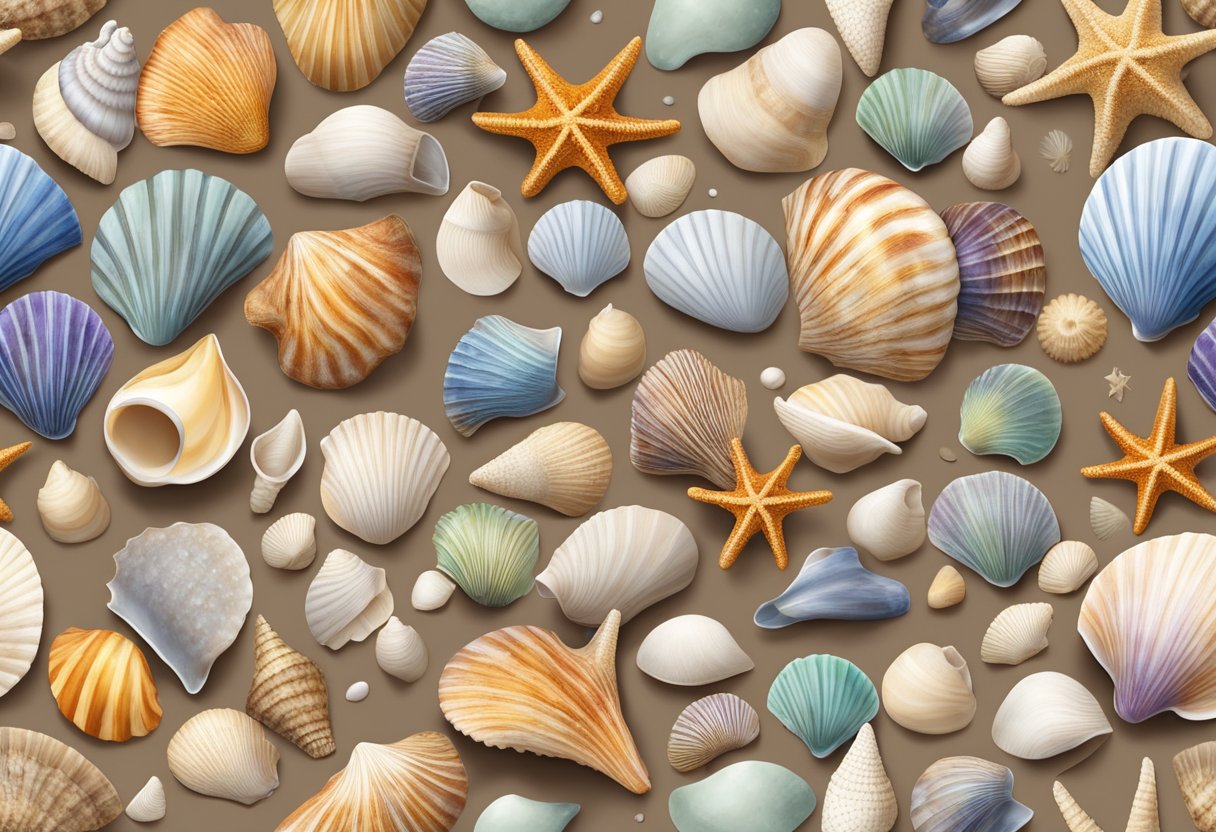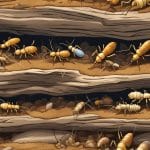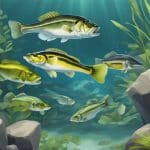Types Of Seashells
Seashells are fascinating objects that can be found on beaches all over the world. They come in a wide variety of shapes, sizes, and colors, and have been used by humans for thousands of years for everything from jewelry to currency. But what exactly are seashells, and how can they be classified?
Seashells are the hard outer skeletons of marine mollusks, which are a type of invertebrate animal that includes snails, clams, and octopuses. These creatures secrete calcium carbonate to create their shells, which are often ornately decorated with patterns, ridges, and spikes. Seashells can be classified into several different categories based on their shape and structure, including gastropods, bivalves, and cephalopods.
Understanding the different types of seashells can help you identify them more easily when you’re exploring the beach. It can also give you a greater appreciation for the incredible diversity of life that exists in our oceans. In this article, we’ll take a closer look at the classification and physical characteristics of seashells, as well as their ecological roles and human uses.
Key Takeaways
- Seashells are the hard outer skeletons of marine mollusks and can be classified into several different categories based on their shape and structure.
- Understanding the different types of seashells can help you identify them more easily when you’re exploring the beach and give you a greater appreciation for the incredible diversity of life that exists in our oceans.
- Seashells play important ecological roles and have been used by humans for thousands of years for everything from jewelry to currency.
Classification of Seashells

Seashells are classified based on different criteria such as mollusk type, shell structure, and their physical characteristics. This classification helps to identify and understand the different types of seashells found in the ocean.
By Mollusk Type
Seashells are primarily classified based on the type of mollusk that produced them. Mollusks are soft-bodied animals that produce hard shells for protection. There are four main classes of mollusks that produce seashells:
- Gastropoda: This class includes snails, whelks, and conchs. These seashells have a spiral shape and are often used for decoration and jewelry.
- Bivalvia: This class includes clams, oysters, and mussels. These seashells have two hinged shells and are commonly used for food.
- Scaphopoda: This class includes tusk shells. These seashells are long and cylindrical and are often found buried in sand.
- Cephalopoda: This class includes squids and octopuses. These seashells are internal and are not commonly found on beaches.
By Shell Structure
Seashells can also be classified based on their physical characteristics and shell structure. Some of the common types of seashells based on shell structure are:
- Univalve: These seashells have a single shell and are often spiral-shaped. Examples include snails and conchs.
- Bivalve: These seashells have two hinged shells and are often used for food. Examples include clams and oysters.
- Multivalve: These seashells have many small, separate shells that are often arranged in a pattern. Examples include chitons and barnacles.
In conclusion, the classification of seashells is important in identifying and understanding the different types of seashells found in the ocean. By knowing the mollusk type and shell structure of a seashell, one can gain insight into its physical characteristics and its role in the ecosystem.
Physical Characteristics of Seashells
Seashells are fascinating objects that come in a variety of shapes, sizes, colors, and textures. Understanding their physical characteristics can help one identify different types of seashells and appreciate their beauty.
Shape and Size
Seashells come in a wide range of shapes and sizes. Some shells are spiral-shaped, while others are conical, disc-shaped, or irregularly shaped. The shape of a shell is determined by the way the mollusk that created it grew and developed. The size of a shell can also vary greatly, ranging from tiny shells that are less than a centimeter in length to giant shells that can be more than a meter long.
Color and Texture
Seashells can be found in a variety of colors and textures. Some shells are smooth and shiny, while others are rough and spiny. The color of a shell can be influenced by a variety of factors, including the type of mollusk that created it, the environment in which it lived, and the minerals present in the surrounding water. Some shells have intricate patterns or designs, while others are solid in color.
Shell Composition
The composition of seashells is also an important characteristic. Most seashells are made of calcium carbonate, which is a hard, white material that provides protection for the mollusk inside. Some shells, such as those of abalone, are made of nacre, which is a pearly substance that gives the shell a beautiful iridescent quality. The mantle, which is a skin-like tissue in the mollusk’s body wall, secretes the material that forms the shell. Shells can also have additional physical features such as spines, ribs, grooves, apertures, whorls, and apexes, which can further aid in identification.
In conclusion, understanding the physical characteristics of seashells can provide valuable insight into the diverse world of mollusks and their creations. From the shape and size to the color and texture, seashells are unique and fascinating objects that can be appreciated by anyone with an interest in the natural world.
Ecological Roles and Adaptations
Seashells play important ecological roles in the marine environment. They provide protection, support, and camouflage for their inhabitants, as well as serving as a source of food for predators. Different types of seashells have adapted to their specific habitats and predators in unique ways.
Habitats and Distribution
Seashells can be found in a variety of habitats, from sandy beaches to rocky shores and coral reefs. They are most commonly found in tropical seas, where the warm waters provide ideal conditions for their growth and reproduction. Some species of seashells are adapted to live in deep waters, while others prefer shallow waters close to shore.
Mollusks, the group of animals that includes seashells, are found in almost every aquatic environment on Earth. They are incredibly diverse, with over 100,000 species identified to date. Mollusks are particularly well-suited to life in the ocean, thanks to their hard shells and other adaptations.
Predation and Defense
Seashells are a popular food source for many predators, including birds, crabs, and fish. To protect themselves from these predators, seashells have evolved a variety of defense mechanisms. Bivalves, for example, have two shells that can be tightly closed to prevent predators from accessing their soft bodies. Gastropods, on the other hand, have a single spiral shell that they can retreat into when threatened.
Some seashells are also equipped with spines, ridges, or other features that make them difficult for predators to eat. Cephalopods, a group of mollusks that includes octopuses and squid, are particularly well-known for their ability to squirt ink and change color to confuse predators.
In conclusion, seashells are fascinating creatures that play important roles in the marine environment. Their adaptations and defense mechanisms have allowed them to survive and thrive in a variety of habitats, while also providing food for predators. Understanding the ecology of seashells can help us better appreciate the diversity and complexity of life in the ocean.
Human Uses of Seashells
Seashells have been used by humans for various purposes throughout history. In this section, we will explore some of the most common uses of seashells in human culture.
In Art and Jewelry
Seashells have been used for centuries in art and jewelry. They are often prized for their beauty and unique shapes, making them a popular choice for creating decorative pieces. Some cultures even believed that seashells had magical properties, and used them in religious ceremonies.
Seashells are commonly used to make necklaces, bracelets, and earrings. The most popular types of seashells used for jewelry include pearls and mother-of-pearl. Pearls are formed when a foreign object, such as a grain of sand, enters an oyster or mussel. The mollusk then secretes a substance called nacre around the object, creating a pearl. Mother-of-pearl, on the other hand, is the iridescent lining of the shell of some mollusks.
As Currency and Tools
Seashells have also been used as a form of currency in some cultures. The use of seashells as money dates back to ancient times, when they were used to trade for goods and services. In some cultures, rare and valuable seashells were even used as a form of currency.
Seashells have also been used as tools throughout history. They have been used to make buttons, combs, and other small items. In fact, the study of seashells, known as conchology or malacology, has helped scientists to better understand ancient cultures and their use of seashells.
Overall, seashells have played an important role in human culture for thousands of years. From art and jewelry to currency and tools, seashells have been used in a variety of ways throughout history.
Conservation and Collection
When collecting seashells, it’s important to keep in mind the impact it can have on the environment. While it’s legal to collect empty shells from most beaches, it’s essential to follow the local regulations and avoid disturbing live animals or damaging the ecosystem.
Conchology, the study of seashells, can help collectors understand the importance of preserving these natural treasures. By identifying different types of seashells and learning about their habitats and life cycles, collectors can make informed decisions about where and how to collect shells without harming the environment.
To ensure the longevity of seashell populations, it’s important to collect shells responsibly. This includes avoiding over-collecting, only taking empty shells, and leaving shells that are still inhabited by live animals. Additionally, collectors should avoid damaging the beach or its surroundings while collecting.
Proper cleaning and preservation techniques can also help seashell collectors maintain the beauty and integrity of their collections. This includes washing shells thoroughly with a mild detergent and water, and using a soft brush to remove any dirt or debris. Collectors can also use a solution of bleach and water to disinfect shells and prevent decay.
Overall, seashell conservation and collection go hand in hand. By respecting the environment and understanding the importance of preserving seashells, collectors can enjoy the beauty of these natural treasures while ensuring their longevity for generations to come.






